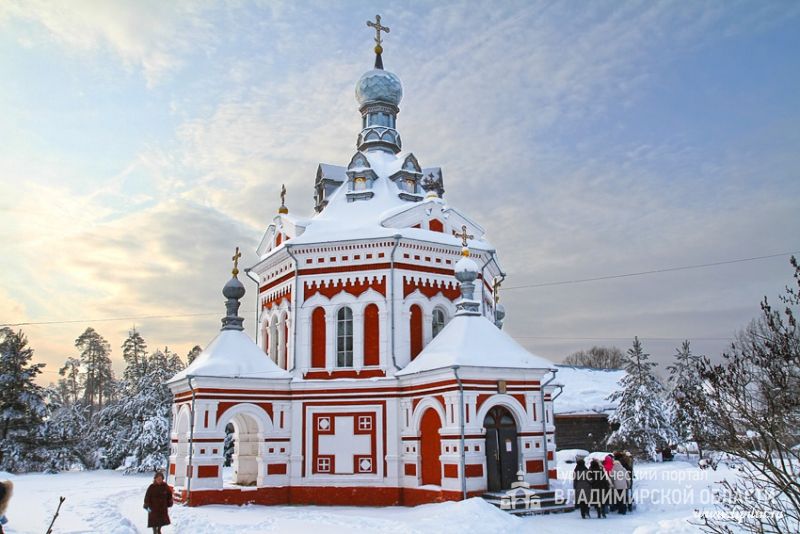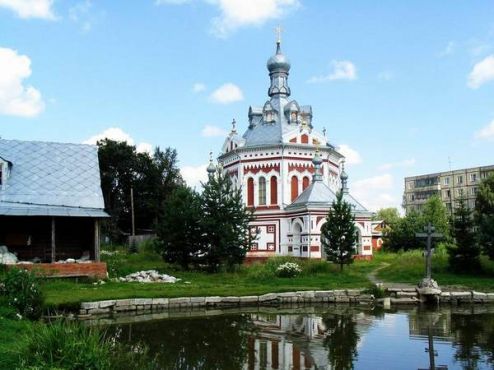Chapel of St. Barbara
- Address:
- Gus-Khrustalny, 2nd People's street
- GPS:
- 55.60418930, 40.67675870
The Chapel of St. Barbara refers to the period of active development of the working settlement of Gus at the Maltsovs’ glass factory (second half of the 19th century). The chapel appeared on the southern, older, outskirts of the village. In the 18th century, according to legend, in this place, a verst from the factory, in the forest near the stream appeared the icon of the holy martyr St. Barbara, in connection with which, there was built a wooden chapel (1765). This icon was recognized as the main shrine of the chapel, and a small river from that time began to be called Barbarian. Near the place of the phenomenon of the icon a large boulder was discovered, the picture on which resembled a girl's trail. This phenomenon was also associated with St. Barbara, and the boulder became a place of worship. Since 1817, the procession began to be arranged here, and in 1882-1885, the wooden building was replaced by a stone smart chapel of elegant architecture. Under its eastern portico there is a spring, at which the icon once appeared.
In the 1930s, the chapel of St. Barbara was closed, and it passed many trials. First, it housed the kitchen, where they made syrup and lollipops, baked gingerbreads. Food block was replaced by a workshop of the funeral service. In the 1970s, the chapel was handed over to the garage of the dining trust. The holy spring eventually was filled up with old batteries and other waste.
The revival of the chapel of St. Barbara in Gus-Khrustalny began only in 1991, when it was transferred to the parish of the Holy Trinity Church. Parishioners restored wall paintings, domes, an iconostasis, an altar, and the icon of the holy martyr St. Barbara again became the first icon that appeared here. In the late 1990s, a pond was dug at the chapel, which is fed from a greatly weakened holy source. In the Epiphany night hundreds of citizens flock to the pond to swim in the Jordan.
 Tourism portal of the
Tourism portal of the
